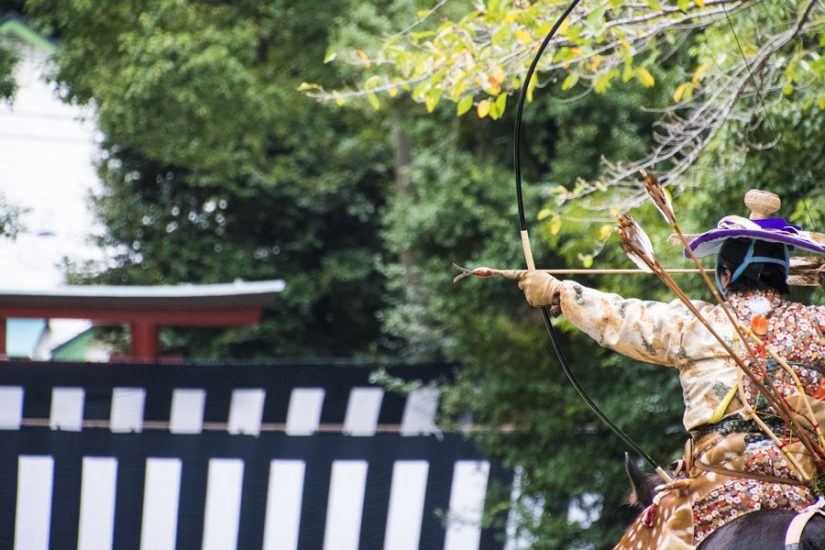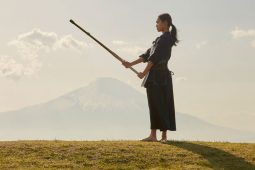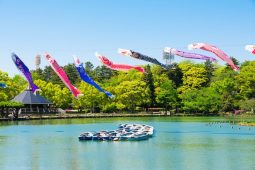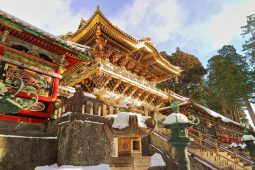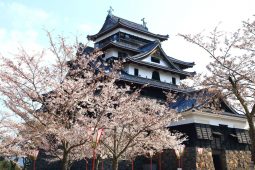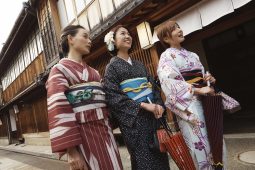As I write this, on the opposite coast, the Tokyo Olympics (which they still insist on calling the 2020 Olympics) are taking place. Whatever my thoughts on that, it’s an excuse to talk sports. No, I don’t normally do that, but I do talk about history; let’s have a look at some of Japan’s traditional sports – not necessarily ones in the Olympics – for something you might not have heard of before.
Sumo is, of course, the big one to most people. Two wrestlers enter a ring – on top of a mound of earth and bounded by rope – and fight to either knock the other down, or push them off the ring through throws, shoves and slaps, often finished in a matter of seconds. It began as a religious occasion, and you can still see that today in the amount of ceremony and ritual involved in every step of the process, as well as how formalised the structures of training, retirement and wrestler houses are. Wrestlers even take on a new, symbolic stage name that they use almost at all times. It even extends to strict rules on dress code and diet for the wrestlers – famously, the staple of a sumo wrestler’s diet is chanko nabe, a stew made from a base of chicken broth and sake, with lots of chicken, fish, tofu, vegetables and so on, served with huge amounts of rice; wrestlers eat a lot of it to put on the weight the sport demands, and often open restaurants for it when they retire.
Sumo today is secularised, officially, but we’re using a definition of ‘secular’ where a shinto priest ritually purifies the ring with salt before a match, so obviously, if you watch it, you’ll be in for a unique experience; it’s probably also one of the Japanese sports with the most non-Japanese representation, as quite a few of the most famous wrestlers are from Hawai’i and Mongolia.
Kendo, or literally ‘way of the sword’, is a little like fencing. It’s also a bit more common in Japan since many schools have an extracurricular club for it. Instead of metal swords, the athletes use big, hollow wooden or bamboo swords (usually bamboo), though they still wear a combination of traditional dress called hakama, and actual armour complete with a metal mask. Fights are typically to the first touch. Kendo has its origins in samurai sword practice, but has outlived this and become its own sport.
Once upon a time (Edo period, roughly), there were also a lot of contests between different Ryu (or styles) of weapon fighting, whether swords, naginata or other weapons – these are gone now, partly since we don’t have samurai anymore, but also because they got into far too many feuds and mini-wars over these contests, until the government of the time decided to ban these contests, since samurai can’t behave properly.
Martial arts probably go under their own umbrella. Aikido – derived from jiu-jitsu, or ‘soft techniques’ – as well as Judo (once again ‘the soft/flexible way’) are two homegrown martial arts that see a bit more representation. Both focus on throws and defensive moves; Aikido aims for joints and disarming your opponent, Judo on using your opponent’s movements and force to redirect them towards the ground. Both are somewhat unusual in that they’re martial arts focused on just getting through a fight in one piece, and hopefully not hurting the other person either. Today, they’re partway between sports and self-defense.
Given how much the Olympics have talked about it being a Japanese sport, I feel like I should point out that Karate is native to the Ryukyu or Okinawa (called Luchu locally) islands, where it’s known as Ti (or ‘hand’). It was heavily influenced by kung fu techniques being developed in China at the time, but its origins are in Ryukyu/Luchu, and considering a lot of people there don’t like the idea of being considered Japanese in the first place, the more respectful approach is probably to remember this if it ever comes up.
Yabusame continues the streak of fairly martial ancient sports; it’s gone in something like the opposite direction of sumo, where it was once a sport and a way to show off, but today it’s a religious ceremony, often done as part of various shinto festivals. The short version is that it’s horseback archery: You ride along a path on horseback (pretty quickly too), and fire arrows with rounded heads at three targets, trying to hit them all as you race past.
Today, there are growing clubs for horse archery in the UK and US. Generally though, Korea, Japan, and especially Mongolia (as well as 14th~ century China from Mongolian influence) are the main places with a big tradition of horseback archery; everyone else, I assume, sensibly decided it sounds far too difficult.
Kemari (lit. ‘kicking ball’) is last, to break the streak of martial sports. It’s also the one depicted in the image above. Unlike the others, it’s not a competitive sport; everyone in the field works together. Its origins lie in Cuju, a Chinese ball game resembling football (or soccer for US audiences), but it’s changed a great deal since. While at first it was mostly a sport for aristocrats, like Yabusame, it’s morphed into something done at shrine festivals, though some people are trying for a secular revival of it as well.
The rules are simple: The players, dressed in uniform that’s basically high 7th century fashion (and also roughly what shinto priests wear today) complete with a big hat, crowd into a field of 6 to 7 metres, or 20ish feet. They kick the leather ball into the air, at which point the goal is to keep it in the air for as long as possible, using anything but your hands and arms. Your feet, legs, head, back, and whatever else are all fair game. It probably most resembles, in western terms, a kind of cooperative hacky sack/footbag.
Those are probably the biggest five; not all of them make it to the world stage, but if you ever want to watch them, they’re easy to find in Japan – Sumo and Kendo especially. Why not take a look the next time you feel like seeing something different?


